Call today for a consultation
HOME » What are Common Types of Car Accidents in Southern Illinois?
What are Common Types of Car Accidents in Southern Illinois?
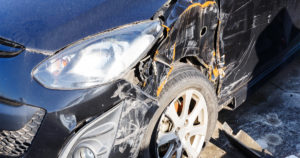 Avoiding car accidents is the goal of every driver on the roads of Illinois. Defensive driving and wise decision-making can prevent a host of accidents and even help drivers avoid these scenarios before they ever get close to being involved in an accident. Even the most experienced drivers have issues with dangerous or awkward scenarios.
Avoiding car accidents is the goal of every driver on the roads of Illinois. Defensive driving and wise decision-making can prevent a host of accidents and even help drivers avoid these scenarios before they ever get close to being involved in an accident. Even the most experienced drivers have issues with dangerous or awkward scenarios.
At the same time, the roads of rural Southern Illinois are unique because they often cross railroad tracks, border massive fields, and continue perfectly straight for miles at a time. With around a million people living across Southern Illinois and St. Louis serving as the only major city in the region, traffic flows through this area steadily. Scott Air Force Base merely adds to traffic levels, and Mid-America St. Louis Airport is close by.
Interstates 64 and 70 allow drivers to enter the region from as far east as Maryland and Virginia. Both Interstates pick up traffic from Kentucky, West Virginia, Ohio, and Indiana, and they allow large trucks or vacationers to press on to the gateway in St. Louis and beyond. With this in mind, drivers should be especially cautious. If an accident occurs, drivers should reach out to an experienced Illinois car accident lawyer as soon as possible to review their legal options.
What Causes Rear-End Accidents?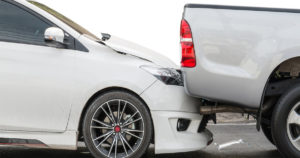
Although a rear-end accident often occurs on the road, drivers can just as easily experience one of these accidents at low speeds in driveways or parking lots. High-speed crashes can be devastating, and those sitting in the back of the vehicle tend to suffer the worst injuries. Distracted driving causes these accidents when drivers forget about stopping fully as they check their phones or look out for road signs. Some drivers have no idea that traffic is stopping, but others are surprised when they are not stopping quickly enough. These accidents can occur at a traffic light or stop sign, but they also occur as drivers attempt to yield, stop to allow others to turn, or allow pedestrians to cross.
Rear-end accidents happen in parking lots as drivers back out of their spaces and do not see other vehicles that are waiting to park. Vehicles with broken brake lights are difficult to see with little to no lighting, and drivers are responsible for not maintaining their vehicles, thus causing the accident.
Low-speed accidents can result in whiplash even if neither vehicle sustains damage. Drivers and their passengers might feel fine at the time of the accident, and they want to avoid making too much of the accident. However, it is never a good idea to avoid calling the police. Having a record of the accident helps victims prove that they were injured the date in question.
After these simple accidents, victims should be wary of neck stiffness, discomfort when moving the head, limited range of motion, headaches coming from the base of the skull, nerve tingling, dizziness, extreme fatigue, trouble focusing, and misplaced anger. Whiplash might not present itself until a few days after the accident when victims realize they should no longer feel discomfort. Victims should seek medical attention to ensure a speedy recovery.
If drivers are involved in a road rage situation, the lead driver can be held liable for the accident. The lead car might brake erratically in an attempt to cause an accident, or they might come to a complete stop on a busy road, creating a dangerous situation for everyone involved. When drivers find themselves in heavy traffic, they might be involved in rear-end accidents as crowded traffic crawls forward.
What are Common Causes of Head-On Collisions?
A head-on collision occurs most often when drivers cross the centerline, moving toward oncoming traffic. A few common causes of head-on collisions include the following: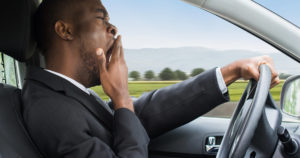
Drowsy driving. Drowsy driving can lead to motorists swaying across the centerline or falling asleep at the wheel. Moreover, drowsy drivers might experience perception issues that make it difficult to see where their lane should be. Motorists should avoid drowsy driving by getting more sleep or carpooling.
Missing or ignoring road signs/signals. Drivers who miss or ignore road signs might turn the wrong way down a one-way street or use the wrong ramp when attempting to enter or exit the highway. If drivers miss signals that prevent them from making a left turn or proceeding, they might drive head-on into another vehicle that is allowed to proceed.
Driving under the influence. Intoxicated or drugged drivers lack the depth perception and reflexes needed to drive safely. They cannot abide by road signs or signals, and they often do not have control of their vehicles. With intoxication comes a loss of inhibition, and impaired drivers might choose to complete illegal or unwise maneuvers in this state. As impaired drivers start and stop repeatedly, they might confuse other motorists, leading to a head-on collision in an intersection.
Distracted driving. Distracted drivers who are checking their phones or attempting to read directions might drift over the centerline or miss a one-way sign. In like manner, drivers who are too focused on their GPS directions might use the wrong exit or entrance ramps. Drivers should set mobile phones aside or use Bluetooth technology, keep both hands on the wheel, and do not engage in serious conversations.
Ill-advised passing. Although passing on two-lane roads is legal when the lines are dotted, that does not mean that drivers can pass simply because they want to. Passing without enough time to complete the maneuver can lead to a head-on collision. Some drivers choose to pass even though the road is not straight, and they could cause accidents because they simply cannot see oncoming traffic.
Inclement weather. When drivers cannot see where they are going, they cannot avoid head-on collisions. Wind, rain, snow, and ice can make it difficult to see the lane lines. Drivers should avoid traveling in these conditions, pull over if they cannot see, or slow down and use their hazard lights so that they can avoid oncoming traffic.
Drivers should note that improper signage can cause head-on accidents, or another driver might push someone into oncoming traffic. During a vehicle or tire malfunction, the manufacturer of the malfunctioning part is responsible for causing the situation that led to the crash.
What is a T-Bone Accident?
A T-bone or side-impact collision kills somewhere between 8,500 and 10,000 Americans every year. These accidents are particularly deadly because the victims only have a door to protect them. Even if the car has side-curtain airbags, the accident can be far more devastating.
In most side-impact crashes, drivers are passing through an intersection without understanding who should stop. These accidents can occur as drivers do not see stop lights, try to turn left as traffic passes, or while drivers exit onto the street. The driver who should have stopped is liable in most cases, or the driver who is entering traffic can be held responsible.
If traffic lights are malfunctioning, the government agency that services those signals is responsible for the crash. If accidents occur as a massive intersection turns into a four-way stop, drivers should yield to other cars, communicate non-verbally with other drivers, and allow the car on the right to proceed first. When drivers do not abide by these simple rules, they can be held liable for any accidents they cause.
In a far more terrifying scenario, drivers crossing over railroad tracks could be T-boned by a train. Drivers injured because of a malfunctioning railroad crossing signal may sue the municipality responsible for maintaining the crossing.
What are Sideswipe Collisions?
 Sideswipe collisions involve two vehicles bumping into one another while maintaining speed. The sideswipe is a common tactic used to push vehicles off the road, or it can occur inadvertently when drivers change lanes and do not realize another car is next to them.
Sideswipe collisions involve two vehicles bumping into one another while maintaining speed. The sideswipe is a common tactic used to push vehicles off the road, or it can occur inadvertently when drivers change lanes and do not realize another car is next to them.
Drivers might sit in someone else’s blind spot, leading that person to believe no one is there. This type of accident is very common when large trucks strike passenger vehicles. Truck drivers often have signs on their vehicles noting that they cannot see other vehicles if motorists cannot see the truck’s mirrors.
Motorists should stay out of everyone’s blind spot as much as possible, and do not be afraid to use the horn to alert drivers who might initiate a sideswipe crash. Road rage and aggressive driving can also lead to sideswipes as an angry driver hopes to terrify or exact revenge on someone else. Sideswipes might also occur when lanes shift because of construction or barriers make the lanes far too narrow for normal driving.
What Happens During a Multiple-Vehicle Accident?
Multiple-vehicle accidents often take the form of pile-ups on the highway. As a crash develops, more people find they cannot stop and add to the carnage. Finding the responsible driver can be difficult because that vehicle may not sit at the front of the accident scene. If there are multiple rear-end accidents, the driver at the back of the line often causes a chain reaction. Large trucks might jackknife and slide across the road as their trailers skid and strike every vehicle in sight.
Any accident cited in this discussion can become a multiple-vehicle accident, and these crashes account for about 40 percent of motor vehicle accidents every year. A head-on collision can easily become a pile-up, or sideswipes can involve several more vehicles, causing the motorists behind them to crash into one another. Insurance companies find it difficult to assign liability in these crashes, and retaining a lawyer helps victims understand who should be held accountable.
How Do Single-Vehicle Accidents Occur?
Although a single-vehicle accident may seem as though it does not involve liability, single-vehicle accidents occur because of a wide range of negligent actions. Single-vehicle accidents can occur when drivers are pushed off the road by another motorist, when debris or tools from a construction zone cause the driver to swerve, or when a lack of road signage leads drivers to crash or veer off the road.
In the aftermath of a single-vehicle accident, victims should ask witnesses or stopping motorists if they saw the accident unfold. A reconstruction specialist may need to evaluate the scene to explain how the accident occurred. Single-vehicle accidents are common when cars malfunction or suffer from severe defects. For example, drivers who realize they have no brakes might drive off the road to stop and avoid collisions with other vehicles. The same is true if drivers experience unintended acceleration or a tire blowout.
A poorly designed road or improper repair might cause single-vehicle accidents as drivers cannot recover from a bump in the road, crack, or pothole. The same may be true if drivers cannot fit their vehicles through a tiny one-lane construction zone. A lawyer can review the accident before the victim walks away without compensation, as an automotive manufacturer, construction company, government agency, or another driver may be liable.
How Do Rollovers Occur?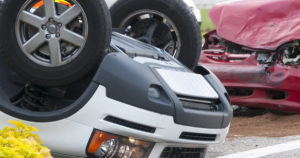
Rollover accidents often occur because of impact before the vehicle rolls. There are rare occasions, approximately 28 percent of rollovers, when the vehicle rolls without impact. As a result, the Insurance Institute for Highway Safety (IIHS) categorizes rollover accidents using the impact that precipitates the crash. Frontal, side, rear, and tripping impacts can cause these accidents, with frontal impact causing the deadliest accidents.
Front and side impacts can force a car to turn sideways, rolling over in the process. If the vehicle trips over the pavement, a pothole, or the curb, it can start to roll as the center of gravity shifts. Some motorists hit otherwise benign cracks or potholes, but their vehicles turn over when they swerve to correct. The extreme force of a corrective turn can roll the vehicle over.
If drivers are clipped from behind, they might succumb to the pursuit intervention technique (PIT) maneuver. The PIT aims to stop a suspect’s vehicle by pressing into the rear corner and turning them sideways. Unfortunately, high speeds and brute force can cause vehicles to roll over in traffic. Aggressive or reckless drivers might have no intention of striking another car, but they can turn the victim’s vehicle enough that it will roll.
What Happens After Ridesharing Accidents?
Accidents involving ridesharing services can be confusing because the accident might require action against the driver, their insurance, or the ridesharing company’s insurance. If the rideshare driver’s insurance can pay off every claim, the ridesharing company is never petitioned for funds.
When the driver’s insurance is exhausted, the corporation’s liability policy is used to pay additional claims. Passengers in a ridesharing vehicle are covered under the corporation’s insurance when the driver is at-fault for the accident. If another driver causes the accident, their insurance pays all claims. When the driver is underinsured or uninsured, a lawsuit helps the victim recover damages.
How Should I Handle a Hit and Run Accident?
Hit and run accidents occur when the other driver leaves the scene of the accident or does not wait long enough to speak to the police. Drivers leave the scene because they are afraid of dealing with the police or filing an insurance claim, but they can be found if the victims or an eyewitness saw the at-fault driver.
During a hit and run accident, drivers should try to remember as much about the offending vehicle as possible. The make, model, and color of the other vehicle will help the police, or a lawyer find them. If drivers remember even a small part of the at-fault driver’s tag number, they should try to record that number before they forget.
If eyewitnesses come forward, they might offer more information about the other driver. Witnesses might take pictures or videos of the other vehicle, and that information can lead to the guilty driver. Although these drivers can be fined up to $25,000 and spend up to five years in jail, they are not immune from civil liability.
A personal injury claim against the driver may proceed while they are paying fines or serving a jail sentence for their actions. If the at-fault driver cannot be found, the victim’s insurance policy will pay out based on the level of uninsured coverage they carry.
How can Drivers Prevent Pedestrian and Bicycle Accidents?
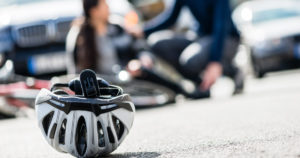 With 6,283 pedestrian deaths across the United States in 2018, someone is killed while walking or riding a bike near the road about every 88 minutes. Pedestrian accidents can easily occur on rural roads as walkers and bicyclists flood the roads every day. This is primarily because rural areas have less traffic, leading to a false sense of security.
With 6,283 pedestrian deaths across the United States in 2018, someone is killed while walking or riding a bike near the road about every 88 minutes. Pedestrian accidents can easily occur on rural roads as walkers and bicyclists flood the roads every day. This is primarily because rural areas have less traffic, leading to a false sense of security.
Drivers encountering walkers or bicyclists must not assume that pedestrians can hear or see their vehicles. Motorists should stop or slow down near crosswalks, as pedestrians might use these paths at any time. Although cars have the right of way when pedestrians are not in crosswalks, that is no reason for motorists to plow forward. Drivers should work in concert with pedestrians to create a safe space for everyone.
When pedestrians are in a crosswalk, they have the right of way. This is especially important when drivers are turning in an intersection. Pedestrians might need to use the crosswalk, and it helps to slow down and communicate non-verbally with pedestrians so that everyone can proceed safely. Motorists should remember that crosswalks exist in all intersections whether they are painted or not.
Is Compensation Available After a Car Accident?
Compensation after a car accident is available so long as someone else is at-fault. The responsible party can be sued for the following:
- All medical costs
- Recovery expenses
- Lost income
- Lost earning potential
- Pain and suffering
- Emotional distress
- Punitive damages
A lawyer thoroughly investigates the accident, determining who is responsible and why. Lawsuits filed after an accident calculate the total damages incurred by the victim to the last cent, and each responsible party is named. If someone dies during an accident, their family must name a representative who can file suit on behalf of the estate. Aside from the damages listed above, a wrongful death lawsuit allows families to recover burial expenses, probate expenses, and additional legal costs.
Why Should I Hire a Car Accident Lawyer?
Hiring a car accident lawyer helps victims begin the legal process while they recover. Recovery can be difficult on anyone, and it is much easier for a lawyer to collect the evidence and file a lawsuit. Once the suit is on the public record, the responsible parties have an opportunity to respond. In some cases, multiple entities are responsible, leading to a much more complex lawsuit.
As the case progresses, a lawyer helps the victim negotiate a settlement if one can be reached. This is a quick and easy way to close the case and recover compensation, keeping the victim out of court and saving money. If necessary, the case can go to trial when it is clear to the lawyer that the defense does not plan to compensate their client appropriately.
At trial, the lawyer argues the case in its entirety, sharing all relevant evidence. Additionally, the victim’s lawyer will appeal the case if it is not decided in their client’s favor. Lawyers also help victims with additional legal matters that arise during their recovery.
When filing a wrongful death lawsuit, the lawyer helps the family select the representative who will file the claim, often following the wishes of the decedent’s will or calling on a dependent spouse or child. Multiple family members cannot file the same wrongful death lawsuit against the guilty party. Only beneficiaries of the estate may receive compensation in accordance with state intestacy laws.
Illinois Car Accident Lawyers at The Cates Law Firm, LLC Help Victims After Any Type of Accident
If you were hurt in a car accident or lost a loved one, you are entitled to compensation no matter the type of accident you experienced. Victims are encouraged to contact the Illinois car accident lawyers at The Cates Law Firm, LLC for assistance filing a lawsuit. We help our clients secure the compensation they deserve and focus on their recovery. We will walk with you every step of the way; from the moment you confide your story until your case is resolved through a settlement or trial. Call us today at 618-277-3644 or contact us online for a free consultation.
Located in Swansea, Illinois, we serve accident victims in St. Louis, Belleville, East St. Louis, Edwardsville, Granite City, Waterloo, Chester, Carbondale, St. Clair County, Madison County, Monroe County, Randolph County, and other regions throughout Southern Illinois.
